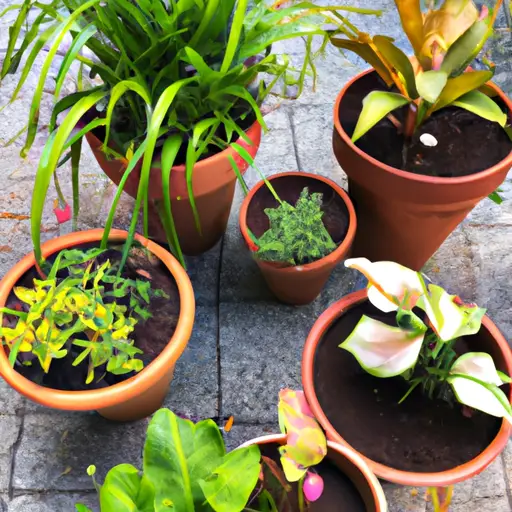The Art of Designing a Gorgeous Container Garden
Container gardening is a popular and versatile way to beautify any space, whether it’s a small apartment balcony or a large backyard. With the right elements and careful planning, you can create a stunning container garden that will be the envy of all your neighbors. The art of designing a gorgeous container garden lies in understanding the principles of design, choosing compatible and visually appealing plant combinations, and paying attention to detail.
One of the first things to consider when designing a container garden is the location. Different plants have different sunlight requirements, so you need to select plants that will thrive in the area where your containers will be placed. For example, if your patio receives full sun all day long, opt for sun-loving plants like petunias, marigolds, or geraniums. On the other hand, if your balcony is shaded most of the day, choose shade-tolerant options such as impatiens or ferns.
Once you have determined the location and light conditions, it’s time to think about the design aspect. The key principle in designing any garden is to create balance and harmony. In container gardening, this can be achieved by considering factors such as color scheme, texture variation, and plant height.
When it comes to color schemes, there are numerous possibilities. You can go for a vibrant and bold look by using contrasting colors like purple and orange or create a serene and calming atmosphere with shades of blues and whites. Another approach is using analogous colors—for example, combining various shades of pink with purple for a soothing effect.
Texture variation is equally important when designing a container garden. Combining plants with different leaf shapes and textures adds visual interest to your arrangement. For instance, pairing spiky foliage plants like yucca or grasses with round-leaved succulents creates an intriguing contrast in texture.
Plant height is another element to consider when creating harmonious container compositions. Tall plants can serve as focal points and add vertical interest to your garden. Make sure to place them at the back or center of your container, and surround them with shorter plants to provide a layered effect. This layering technique will create depth and make your garden look more visually appealing.
Once you have established the design principles, it’s time to choose the right plants for your container garden. Start by considering the growth habits, water requirements, and growth rates of different plants. It’s essential to select plants that have similar needs, so they can thrive together in the same container.
Consider both foliage plants and flowering varieties for a well-rounded container garden. Foliage plants provide long-lasting interest even when flowers are not blooming. Some popular foliage choices include elephant ears, hostas, or ornamental grasses, which add texture and different shades of green to your containers.
Flowering plants bring pops of color and visual appeal to any container garden. Choose varieties that bloom at different times throughout the season for continuous color. For example, combine early-blooming pansies with mid-season petunias and end-of-season chrysanthemums for a stunning display all year round.
Once you have selected the perfect combination of plants for your containers, it’s time to pay attention to detail in terms of maintenance and care. Regular watering is crucial for container gardens as they can dry out quickly due to limited soil volume. Monitor moisture levels and adjust watering accordingly.
Fertilizing is also essential for healthy plant growth in containers. Use a slow-release fertilizer or liquid fertilizer diluted according to package instructions every few weeks during the growing season. Additionally, keep an eye out for pests or diseases that may affect your plants, as early detection is key to addressing these issues promptly.
In conclusion, designing a gorgeous container garden requires attention to detail and an understanding of design principles such as balance, color schemes, texture variation, and plant height. Careful selection of compatible plants, considering their light requirements and growth habits, is the key to a thriving container garden. With proper care and maintenance, your container garden will not only be a visual delight but also a source of joy and relaxation for years to come.














